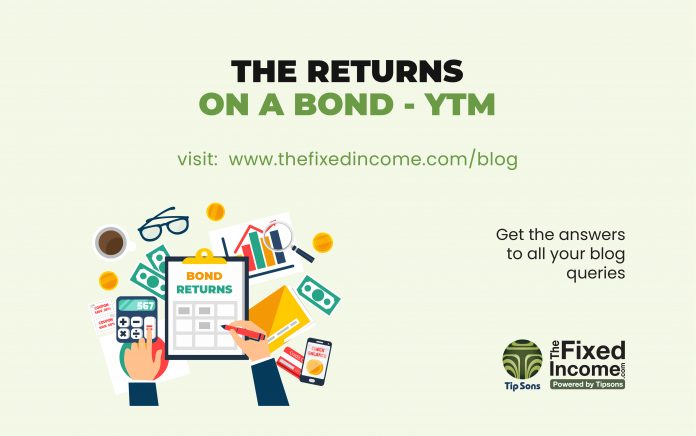The bond investor actually has a focus on the ultimate returns by a bond (the market treats those who require the regular cash payouts differently from the returns perspective). This requires the investor to reinvest the coupon proceeds for the residual period of the principal of the bond. It is such an action that is expected to indicate at the point of the investment itself what returns the bond will provide over its lifetime if was just held till final maturity proceeds are paid out (except for reinvesting the periodic coupon cashflows). The result provides, in theory, the total returns from the security. This is the yield to maturity of the bond.
The yield to maturity also referred to as book yield or redemption yield of a bond is the effective or internal rate of return earned by an investor when she buys the bond.
Bond prices are often volatile. The price fluctuations may well match the equity market turbulence on some days. The attraction of a bond at what is a mouth-watering price for a particular investor may be a good selling price for another investor, again as with equity. The attraction of a price is largely based on the desired or target return for the investor.
The yield to maturity of a bond might not be the same as the coupon, or interest rate paid out on the bond. It is the same only if the bond is purchased at par, which might not be the case in the secondary market. In the market the bond price is hardly related to the par value, but rather the price is derived from the value of future coupon payments and the maturity amount.
The bond price is calculated from the yield to maturity of the bond, as that is the effective return on the bond. The formula,
YTM = C1/(1+YTM)^1 + C2/(1+YTM)^2 + C3/(1+YTM)^3 + ……+ Cn/(1+YTM)^n + Maturity value/(1+YTM)^n
Here ‘C’ is the coupon or each installment of interest received,
And ‘n’ is the final amount on maturity which actually comprises the last coupon and repayment of principal which may be the face or par value, or accompanied with a premium on redemption. In a bond every cash flow as the coupon is known, as also the terminal or redemption value.
YTM as a concept has been studied and used widely in India since the early 1990s. Till then it was the current yield that was operational. The limitation of the current yield is that it ignores the premium or discount on redemption value. To use an old example, a 10% bond maturing in 10 years will be priced at Rs. 113.42 if rates (YTM) become 8%. This price considers that between the current rate of 8% and the coupon of 10% there are Rs. 20 extra that will be paid as a coupon on the bond, and Rs. 13.42 less than the amount paid now that is received on maturity.
Limitations:
The formula does not apply to a ‘discount bond’ or bond that does not pay a coupon, but rather only a maturity amount. The concept of YTM however applies to these bonds too.
The assumption made is that the coupon received is reinvested at the same YTM. This is unlikely for a couple of factors. One is that interest rates for the short term are normally a lot less than the long term. It is likely that reinvestment of coupons is successively at lower rates. Secondly, interest rates are not constant. As they change the reinvestment rate on the coupon will also be different. These factors will impact the YTM is calculated at any point, but not to such a great extent that the concept is at risk.























